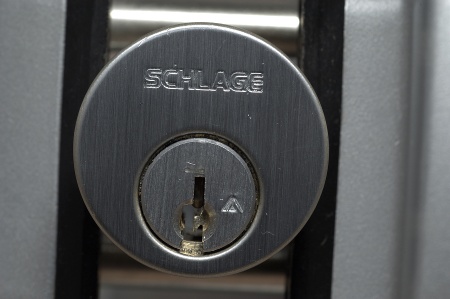
Figure 1. A Schlage Everest cylinder .
23 April 2003

Figure 1. A Schlage Everest cylinder .
Schlage Everest locks are based on a family of patent-controlled keyways distinguished by a small vertical ward pointing downward at the lower left. A secondary locking mechanism attempts to block the lock from operating without a correct Everest key inserted in the lock, even when the pins are at the shear line.
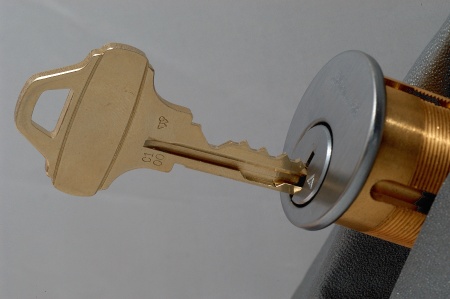
Figure 2. Everest Key & Cylinder.
Everest keys have an upward groove along their lower right that mates with the downward ward in the keyway. The groove lifts a pin at the far end of the keyway that allows the plug to turn. (The notch in the groove 2/3rds of the way down the key has no effect on Everest locks, but is cut at the factory to prevent Everest keys from being modified for use with Schlage Primus sidebar locks, another restricted key system.)
The pinning of Everest locks follows Schlage standard depth and spacing; standard Schlage code cutting machines work well for it. (Everest keys may appear somewhat larger, but that is only because they have an oversize bow). All Everest locks are pinned for six pins, and do not by default use special security pins (e.g., spools or serrated), at least in the non-UL-listed versions.
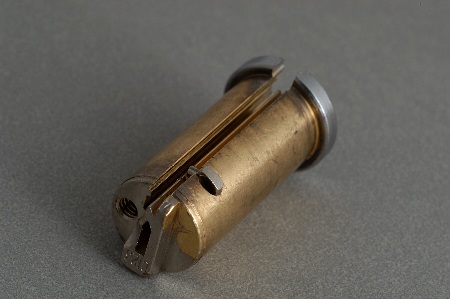
Figure 4. Bottom of Everest plug, with check pin extended
A "check pin" protrudes from the bottom of the plug into the shell and prevents the lock from turning, even if the six pins all have cuts raised to the shear line.
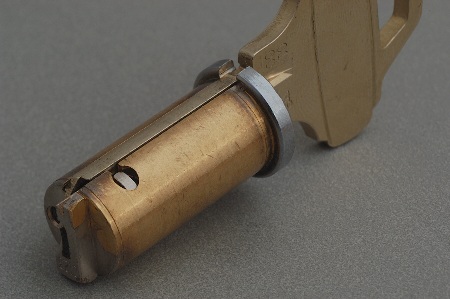
Figure 5. Bottom of keyed Everest plug, with check pin retracted .
When an Everest key is inserted in the keyway, the check pin retracts into the plug, permitting the lock to operate. Note that the position and depth of the check pin is the same on all (open keyway) Everest locks, although different key profiles limit key interchange between different systems to some extent.
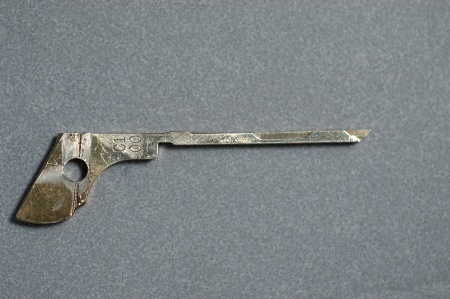
Figure 6. An Everest torque tool, made from a key.
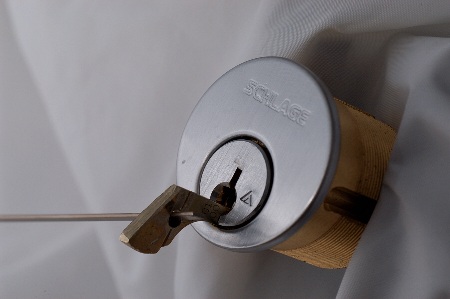
Figure 7. Using Everest torque tool.
Everest locks are no harder or easier to manipulate than standard six pin Schlage locks, but the check pin must be lifted while applying torque. This can be done by inserting a thin wire below the vertical ward in the keyway, or by using the bottom part of an Everest key (the bow of which can also serve as a torque tool). In the homemade tool shown in Figures 6 and 7 (which was cut down from a standard Everest blank), a hole has been drilled into the bow to allow insertion of a stiff wire for additional leverage and working room.
How secure are these locks? To the extent that there is additional security it is from key control, not additional pick resistance. Schlage has two lines of Everest keyways, "open" and "restricted". Keys for the "restricted" keyways are available only in cut form from Schlage; blanks for the "open" keyways are available from Schlage locksmith distributors, but, because of the patent protection, are not (legally) available from aftermarket vendors. This makes even the "open" keys relatively difficult to duplicate casually at, e.g., a local hardware store. Keys for both the open and closed keyways could be produced in small quantity by e.g., casting or milling, but that obviously raises the bar beyond casual duplication. The vertical cut in the side of the key could make casting or milling more difficult than for other keys.
Images taken with a Nikon D-100 digital camera with a Nikkor
85mm 1:2.8D tilt/shift macro lens (with Kenko extension tube).
Lit by electronic flash and various reflectors.
All images and text Copyright © 2003 by Matt Blaze. All rights reserved. You may not copy, modify or use these images or text, in whole or in part, for any commercial or non-commercial purpose without permission.
23 April 2003; revised 23 April 2003